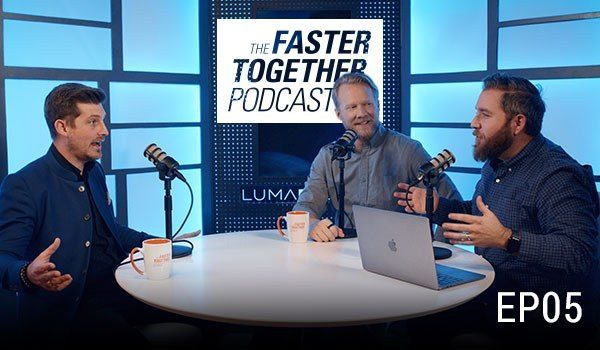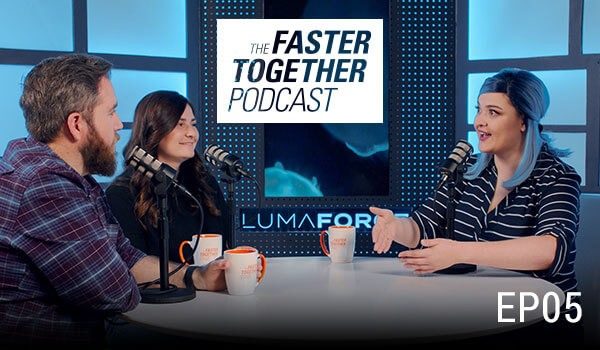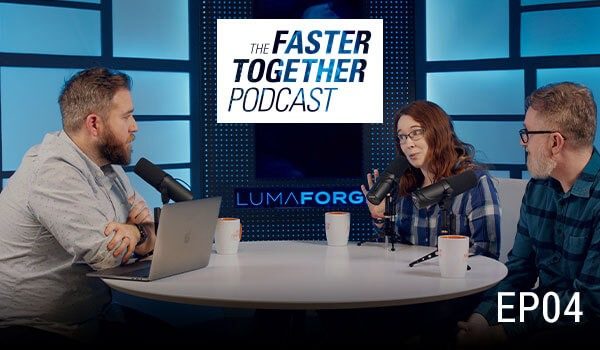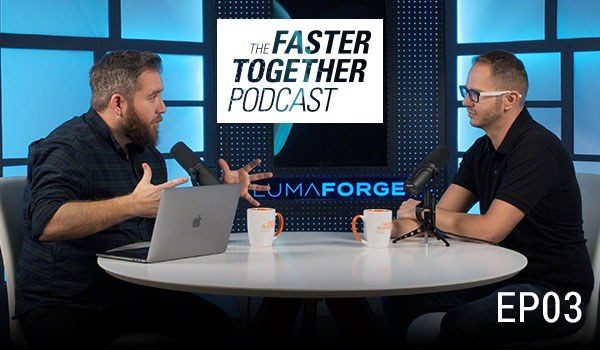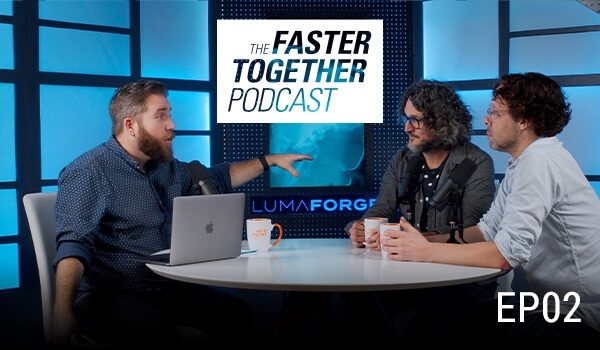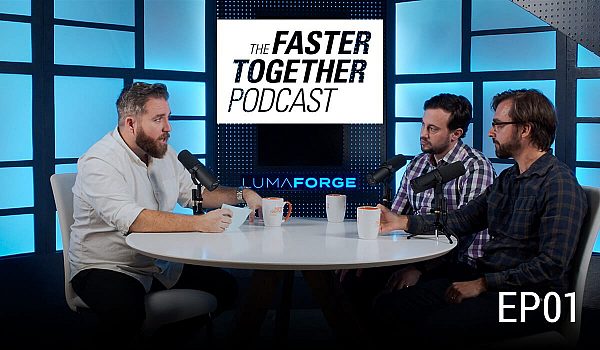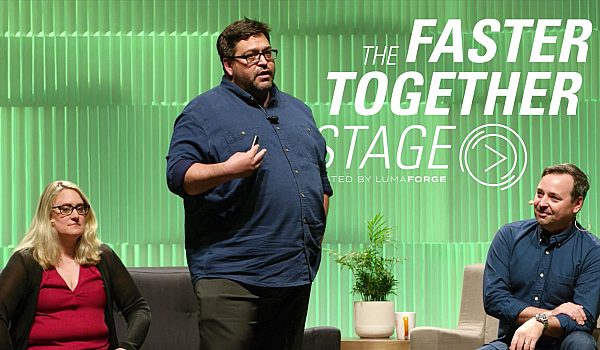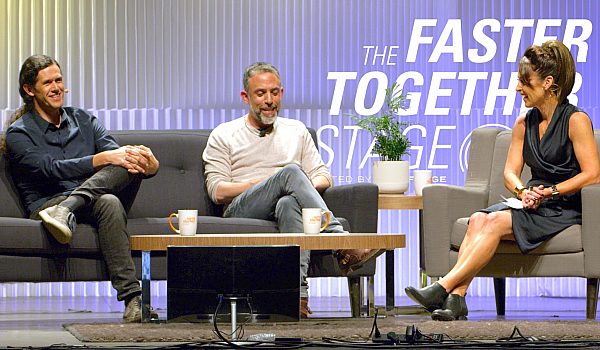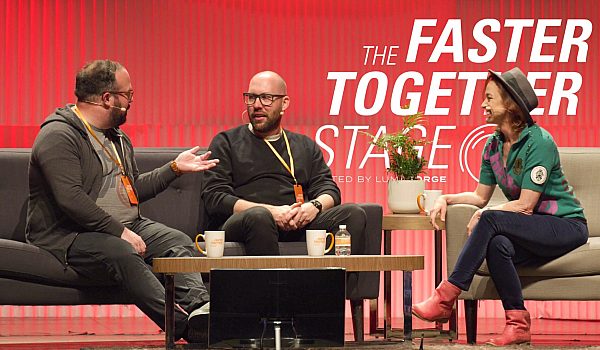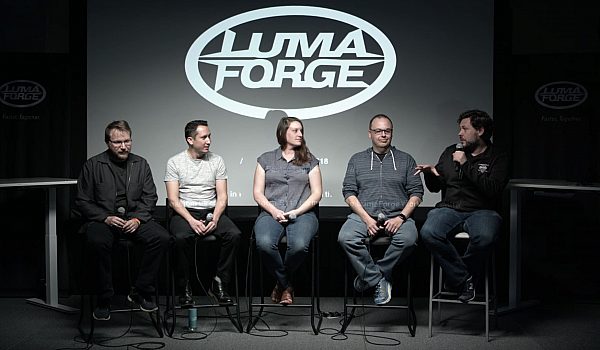Rachel Bastarache Bogan edits mostly corporate video. However, telling a story is important no matter what kind of video editing you do. Learn the importance of a solid story arc, effective uses of music, and the creative use of eye-trace.
- Hey everybody. Thank you, Sam. It's an honor to be here today. How is your NAB going? Yes, all right. It's not Wednesday, so you're not all tired yet. That's fantastic. So as Sam mentioned, I'm Rachel. And I'm here to talk about how you edit because it matters. My company mission is revealing extraordinary ideas and stories that transform the world by activating audiences through video. And this is really the key thing for me. Because I work largely in the corporate world. And in the corporate world, you have to make stuff that's actually gonna get somebody to do something later. And this is becoming even more critical in today's world. And it is because if your videos are ignored, your message is lost. And let me explain why. Because this stuff, when I started researching it really started to freak me out. Because it affects everything that I do as a producer and as an editor.
First of all, 45% of all people watch an hour of video online every day. If that is a two-minute video each time, that is 30 videos a day. And we also know that many of those videos are not two minutes or even shorter and this becomes really critical. 84% of consumers have bought a product after watching a video but 75 have not bought because the product voiceover annoyed them. How you edit matters. And this is super, supercritical because analysts at Cisco are predicting that by 2020, 82% of communication online is going to be video. If you are producing video that needs to convert an audience, that needs to get them to do something, you need your videos to stand out in all of this noise. If your videos are ignored, your message is lost. And if this is happening right now, thankfully, there are three core elements that you can start working into your edits that will actually make this project and this process easier. They are story arc and emotion, music and emotion, edits points and eye-trace. And the real core of this is emotion. And this is something that's really interesting. Let's start with core element one, story arc and emotion. It's really simple. A lot of people ask me all the time, like what's the basics of storytelling? And I'm like, it's truly just a journey. The question becomes where do you want your audience to go? Where do you want to take them? But the greater question to answer is what do you actually want them to do after they have watched your video? Do you want them just to watch? Do you want them to purchase? Do you want them to donate to a non-profit? Do you want them to start volunteering? Do you want them just to share? Now, a basic story arc looks a bit like this.
Now, I promise you, this exists everywhere and you think that your videos have this structure that starts with a beginning, a middle, and an end. But you'd be surprised how many of them don't. Have you ever seen a video where it starts out great and then it kinda just peters out and you're like, why did I watch that? Or worst of all, you get into a video that you have no clue why it was relevant. Or worse yet, the worst of them all is the one that starts with, buy me! And you have no idea why. Each of these videos is stuck in a part of this story arc. Just because you have a start time code and an end time code doesn't mean you actually are taking your audience on a journey. And the way that you get audiences to do what you want them to do is through activating emotion. We all do things based on the emotions that we're feeling. And so this becomes really critical in corporate and non-profit video because you're actually trying to get your audience to take an action. Basically, on a story arc, it means that before they watch the video, they had absolutely no reason to do the thing. Whatever that is that you want them to take, the action that you want them to take. And yet somehow, after the end of this story arc, they're gonna have every reason to do the thing. So the question then becomes what changed your mind? To illustrate this, I want you to meet my friend Dylan. Dylan is an aggressive park skater.
Now I actually do this as well, which is why I know him. And so I wanna introduce you to the idea of park skating. So I have a couple of goals with this. Goal one is to introduce you to the awesomeness of park skating. Goal two is to get you guys to share it because by your sharing it, I'm gonna give Dylan the opportunities to create new sponsorships with sports companies. So before the video, you guys have absolutely no clue what this is. This is something that's starting to rise in popularity but it's still relatively unknown unless you're in the circle. So I wanna introduce you to it and after the video, I want you to share it. And the way that I'm gonna do that is that I'm gonna take you on an emotional journey. Emotions are the most important things. And a lot of people think that we live in a society where it's just the facts, ma'am. You know, I just wanna know what it is. But unfortunately, facts don't sell. Facts don't convert. Instead, it's the emotions. And I like to say that emotions are the thing that bypass the thinking brain to get into the heart and the action that actually makes somebody do something. So the question then becomes can we be told what to feel? And the answer is yes. And that is through music and emotion. So many people use music as wallpaper. It's just thrown on the back of a video and it's just playing in there, largely to move your interest forward so you'll keep watching the visuals that are there. But the reality is that music reinforces the emotion of a story. And I wanna prove it to you. How do you feel as you listen to this? Something is going down. Something is happening and we know that this is tense and somebody is fighting. So how about this one? Are you guys feeling like a little bit of uuh, I don't know what's going on right here, and this is creepy? Your emotions are telling you this purely through music. Here's the last one. My husband was listening to this the other day and was like this sounds like fairies in a flower garden. But you guys are laughing. Because you hear exactly what I'm talking about.
Music amplifies the emotions that we want our audiences to feel when they're in that story arc. So before you have the emotions of, you have no clue what's going on, you're not interested, you're apathetic, you're oblivious, and afterwards, you have emotions that are elation, joy, victory, satisfaction. Music becomes the part that gets us to wow! And wow is the most important thing that we need to activate in our videos. Because, as I like to say, the wow is the pow! If you activate wow, people are going to do something. Whether that be wow, that was amazing. I have to share this with my friends. Or wow that was terrible, I have to get involved in solving this problem. Wow activates people into action. And so in Dylan's video, I need to grab and drop you into the sport of park skating. I need to make you feel the energy and the fun. And I need to excite you enough that you're actually going to share the video. So what does that sound like? Yeah? Something you all wanna watch? Apparently I had more of this than I thought I did. Now, I wanna bring this up as an important note. Not all of your emotional needs will be often met by a single music track. Now, Dylan's video is gonna be really short so changing it up a whole lot didn't really make a lot of sense. But a lot of people just throw in one music track that seems to fit all the emotionals and the emotional things that you need to get your audiences to feel. But often it's using multiple tracks and cutting them together that actually tells that emotional story. And I say that because you need your music to reinforce that story arc. And if you're using just one music track, you might not get the most power that you can when you actually use multiple tracks. And remember, it's all about emotional activation. Because that is the thing that makes people purchase, donate, volunteer, share.
Everything is about emotion. Even your cuts. So that brings me to core element number three. Editing and eye-trace. Now I get asked this question all the time, isn't it just assembly? And the answer is, well, on some level, yes. But when you actually just throw clips together, you run the risk of boredom, distraction. You can completely disorient your audience. And worst of all, you can sicken them. And these are critical things that you have to avoid if you're going to keep an audience watching. The second that you lose your audience it's very hard to get them back and it's even harder to get them back not just in the one video, but for your next one. If you start cultivating a brand that does all of these things, you're going to get dumped into that irrelevant category and you're going to get ignored. But the opposite of this is creating cuts that engage, they retain, they reinforce your emotions and your messaging and quite frankly, they can be memorable. And the last little bits of everything being centered right here in the screen is an example of what I call focal point. We understand what focal point is and the rule of thirds. You know, you place your subject on one of these rules of thirds and it makes sense. And it can be anywhere where you're looking. You have it on different points here. In a picture, this can often look like this. Focal points up in the upper left hand corner. Or it can be here, on the lower right. We understand this in photography but for some reason when we start making video move around this start actually getting really complicated. And it's because unlike a solid focal point, we have where it's here, you notice it. Now I'm gonna cut with a photo to the next one. Your eye is still looking where Dylan was in that photo. But once things start moving around it gets really interesting. And this brings me to the concept of eye-trace. And this is one thing alone, that can transform your edits, if you're editing in the corporate world.
So I wanna illustrate this. Dylan is here. Your eye is on his skates. So what happens when he moves away from that one spot? Your eyes are following his skates, right? Your eyes are going where his skates go. They don't stay in one part of the frame. And this is the thing that is most critical. Because when you cut with the focal point, you lead your audience through your messaging, and they don't tune everything out. There's an example of what I call stay in place when you're making your cut. If your focal point is right here, you want your next cut to be in that same space when the shot transitions. Your eye doesn't recognize the fact that the shot changed until something new is happening. I wanna illustrate this with a short little clip from Dylan's video. Everything is going to land inside this red circle. Everything, and as a result, I don't need crosses offs in between the things that are happening. Your eye is automatically drawn through this and it becomes seamless. You're seeing all of this stuff happening but you don't necessarily recognize that the cuts are happening and you're not getting disoriented. So this is also using eye-trace. This also applies when your subject is moving across the frame. You have the end of shot one, it's moved. You start in one place, you move to the next one. So you want to start your next cut wherever shot one ended. This is an example of what this looks like. Dylan's skates are moving across the frame and so I'm using that movement to guide you to where the next cut is. Now, there is one slight thing that's a little bit different and this is what I call the in and out edit. And this applies where you have a physical space that has to maintain continuity. In this, if you have something moving out of one frame, you want to have it moving into the next frame.
Now, the reason why this is important, you're gonna watch Dylan jump off of this box and 360 it, if I had Dylan doing what I said in follow the leader, exit out of the frame and then bring him back into the frame and then have him exit on the other side again, it wouldn't make sense. Because now you've defied the laws of physics. You cannot jump from one side, back to the other, and back to the other side when you are in a continuous movement situation like that. So think about what you're actually asking your subject to be doing in terms of how you're cutting it. And move people along that way. So the question also comes up, should I edit to the music or as I like to ask it, to beat or not to beat? We can edit on every single cut which becomes really predictable. It's a great way of moving emotion forward. But it's drawback is that it's predictable. The other way to do this is to edit instead to the flourishes of the music. Letting your subject in the frame do something that either lands on the beat itself or illustrates the flourishes that are in the music. So the now question is does it actually really matter? I say no. As much as I've just been talking about this for the past 15 minutes. No, it doesn't really matter as long as you are telling a story and activating emotions. Everything comes down to the emotion.
I have seen stuff that is beautifully shot, has great music, has all of this stuff, and it was shot on an iPhone. Or it was shot on a crummy, crummy, early Nokia, like smartphone, way back in the day. And the reason why it worked was because it had a story. And then but likewise, I've also seen stuff that is gorgeous and tells absolutely no story. So putting all of this together. What is all of this look like? Well, here's Dylan's video. So how many of you wanna share Dylan's video now? Thank you.


 Mobile
Mobile
 Tower
Tower
 R24
R24
 Builder
Builder
 Manager
Manager
 Connect
Connect
 Kyno
Kyno
 Media Engine
Media Engine
 Remote Access
Remote Access
 Support
Support
